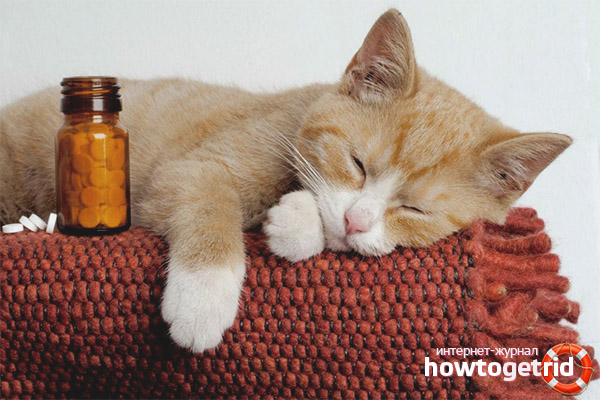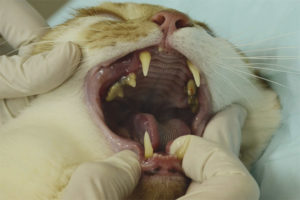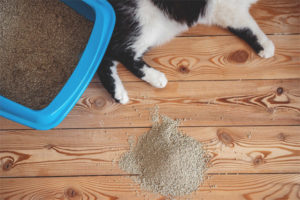The content of the article
Antibacterial drugs or antibiotics are used to treat inflammatory processes that are caused by bacteria entering the body. They help to effectively and quickly cope with the infection. Antibiotics are also widely used in veterinary medicine.
These drugs are used to treat cats, but they should be used with extreme caution. It is necessary to strictly adhere to the recommendations of the veterinarian. Uncontrolled use is fraught with grave consequences, even fatal. For this reason, you should not prescribe antibiotics to the cat yourself, ignoring the advice of a specialist.
Today, many different antibacterial drugs are available. They differ in their origin - synthetic or natural. But they all have a similar effect - the neutralization and destruction of infectious pathogens and fungi. They can be prescribed for the purpose of treatment and in order to prevent complications due to surgical interventions and injuries.
What it is?
Antibiotics are a scientific discovery that happened by chance. They were invented by the English scientist Fleming, who once witnessed how penicillin mushrooms destroy Staphylococcus aureus in a Petri dish. This incident, which happened in the laboratory once, completely changed the world of medicine. Nevertheless, the healing properties of some mushrooms were known long before it. Arab healers used fungal mold to treat purulent wounds. Some facts suggest that Maya Indians also used fungal mold for treatment.
Antibiotic action
Different drugs act differently on infectious pathogens. Some neutralize them, preventing reproduction. Others simply destroy them.
According to the type of exposure, antibiotics are divided into 2 types:
1st type - with bactericidal action. Destroy the causative agent of infection.
2nd possess bacteriostatic or neutralizing effect.
How the drug fights the infection is extremely important. Bactericidal medicines are contraindicated in certain types of bacteria, for example, their use for representatives of the cat family is dangerous in the fight against staphylococci. This is fraught with blockage of the urethra. When these bacteria die, they can precipitate in the bladder cavity. This leads to the formation of sand and stones. However, sometimes it is impossible to do without them. For example, when it comes to deadly cat diseases, pyometra or sepsis, as well as a number of others. Their action is much more effective when applied topically for the treatment of purulent wounds and ulcers.
In severe cases, both types of antibiotics can be used in large doses, but treatment should be supervised by a veterinarian. Sometimes drugs with a prolonged effect are used. Such antibiotics are not so fast, but their exposure period is longer.
About release forms
Antibacterial drugs are used locally and internally. Topical antibiotics are available in the form of ointments, powders, sprays and liquids. For example, for the treatment of bacterial conjunctivitis, they are used in the form of drops or eye ointments.
Antibiotics, which are used to treat internal and common infections, are available in the form of potions, injectable solutions, infusions, and tablets. In diseases of the upper respiratory tract, sprays and drops can be used.Genital infections are treated with candles.
Types of drugs
Traditionally, antibiotics are usually classified according to their chemical origin, depending on the active substance. This applies to drugs of any type of action.
All antibacterial drugs are divided into groups:
- Penicillin;
- Cephalosporin;
- Tetracycline;
- Chloramphenicol;
- Macrolides;
- Aminoglycosides;
- Glycopeptides;
- Lincosamides and others.
Given the wide variety of antibiotics in the pharmacological market, it becomes clear why it is precisely for the selection of the necessary drug that a specialist consultation is required. Most cat owners are not qualified doctors, so self-treatment is unlikely to bring the desired result. Even if the drug is selected correctly, then it should be used under the supervision of a veterinarian.
Important! Any antibiotics can be addictive. With the systematic use of the same drug, viral pathogens cease to respond properly to it, therefore its effectiveness is reduced and such treatment does not have an effect.
When the initial dosage is less than necessary, the bacteria quickly adapt to the active substance and take new forms that are resistant to drugs. This complicates further treatment.
Any antibiotics can provoke individual reactions in the body of the animal. This is another cause of complications due to antibiotic therapy. In some cases, a professional selection of drugs is necessary to determine their effectiveness before treatment begins. To do this, a sampling of tests is carried out and the effectiveness of antibiotics in specific cases under laboratory conditions is checked before treatment begins.
Pros and cons

It was with the advent of antibiotics on the world pharmacological market and their widespread use in medicine that led to the emergence of the well-known saying: "One is cured, the other crippled." Despite their effectiveness, they have many side effects and contraindications.
Pros:
- low toxic effect on the body;
- good effect with a small dosage;
- begin to act immediately after administration;
- antibacterial effect persists after penetration into the body;
- neutralize toxins, which are the waste products of bacteria.
- have an antimicrobial effect in a wide range.
Minuses:
- addictive;
- high toxicity in some drugs;
- kill bacteria beneficial to the body along with pests;
- their use is often accompanied by dysbiosis;
- individual allergic reactions and other unpredictable side effects are not excluded.
Important! Any drugs are prescribed individually after examination and diagnosis of the cat. It is almost impossible to independently determine the cause of the disease and the pathogen. Only a qualified specialist with the necessary knowledge and experience can help in this situation.
The most popular antibiotics
An indication for the use of antibacterial drugs is the presence of infectious inflammatory processes in the animal. However, it is almost impossible to independently find the cause of this condition. For example, a cat has a purulent process in the wound. Many in this case use tetracycline ointment. But sometimes the cause of inflammation is other infectious pathogens, such as fungi. Then you need a completely different action of the drug.
For this reason, if antibiotics are used, prior consultation with the veterinarian is necessary. Today, most drugs have complex compositions and often include several active substances at the same time. In addition to them, they also contain auxiliary substances that may be contraindicated for representatives of the cat family.
Possible side effects
Antibiotics are widely and effectively used to combat any infectious pathogens. However, they have many contraindications and side effects from use. Together with the "bad" microbes, they kill those bacteria that are simply necessary for a living organism to function normally.
Regardless of the form in which these drugs are used, they, in one way or another, bring certain harm. For this reason, their use is often accompanied by the appointment of additional drugs, the action of which is aimed at restoring microflora.
When harmful bacteria die, the remnants of their vital functions are naturally excreted by the liver and kidneys. If these organs are not completely healthy, then the use of antibiotics can provoke pathological conditions in them. For this reason, taking these drugs should only begin after a preliminary examination.
The correct selection and adequate assessment of the general condition of the animal makes it possible to minimize the risk of side effects. In case of liver diseases, hepatoprotectors and agents that help reduce the burden on the kidneys may additionally be indicated.
Many representatives of the cat family are prone to allergic reactions to various external stimuli, including antibiotics. If the cat suffers from individual intolerance to the active substance of the drug or auxiliary components, then its withdrawal and the appointment of alternative medications will be required. Since allergies are quite unpredictable things and can manifest themselves in different ways, up to anaphylactic shock, the responsible owner must have antihistamines in a form convenient for cats to use in the medicine cabinet.
During the period of taking antibiotics, the immune system weakens, for this reason the risk of developing allergic phenomena even increases to those substances to which no reactions have occurred before. It can manifest as vomiting or upset stools. If you suspect an individual intolerance, the drug should be excluded and consult with your veterinarian to prescribe an alternative treatment.
How to avoid problems?
It is possible to minimize the risks and get the effect of treatment only in the case of qualified assistance. In no case should you use antibacterial drugs on your own without consulting a specialist. This can cause negative consequences for the animal’s health and life threatening.
If the antibiotic and the method of its administration are selected correctly, then the effect of treatment will be maximum, and the risk of side effects will be minimized.
Video: how to give a pill to a cat











Submit